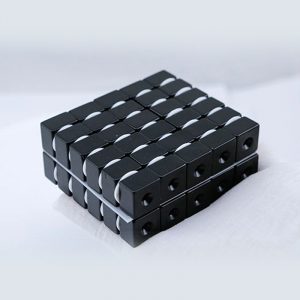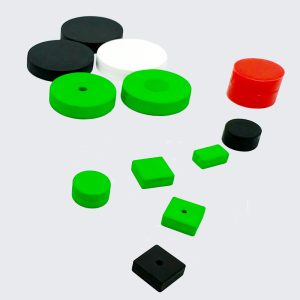Product description
The rare earth magnet is a very different magnet from the other magnets. Its source is known to be the periodic table, with 17 elements being counted as its part.
Besides, these magnets are known to be used in hi-tech companies, contrary to the other common magnets. Also, they are known to be used when a great magnetic pull is needed. There are mostly used in technology, manufacturing as well as engineering companies.
Custom Rare Earth Magnets
Our company has experts who specialize in making these quality magnets. The magnets are manufactured in different sizes based on the role they are supposed to play.
Also, these magnets are manufactured in different shapes; they can be cylindrical, rectangular, or circular. Besides, they can be manufactured in different colors based on the customer’s needs and the particular magnet’s work.
The below information is necessary if you like to make your own custom magnet.
1. Shape and Dimension Requirements
2. Magnet Grade / Gauss / Pull Force Requirements
3. Requirements for Magnetization Direction
4. Coating Requirements


Rare Earth Neodymium Magnet Specification
|
Material
|
Neodymium-Iron-Boron
|
|
|
Working Temperature
|
Grade
|
Max. Operating Temperature
|
|
N35-N52
|
80°C
|
|
|
35M-50M
|
120°C
|
|
|
35H-48H
|
130°C
|
|
|
35SH-45SH
|
180°C
|
|
|
33UH-42UH
|
220°C
|
|
|
30EH-35EH
|
150°C
|
|
|
30TH-35TH
|
280°C
|
|
|
Magnet Shape
|
Disc, Cylinder, Block, Ring, Countersunk, Segment, Trapezoid, Irregular shapes and so on. Customized neodymium magnet shape.
|
|
|
Magnet Coating
|
Ni-Cu-Ni, Nickel, Zn, Gold, Silver, Copper, Epoxy, Chemical, PTFE, Parylene, Everlube, Passivation and so on.Customized Coating.
|
|
|
Delivery Advantage
|
The leadtime must be 2-5 days quicker than industry average because of more flexible machine process control.
|
|
|
Price Advantage
|
The price is 5-10% cheaper than industry average because of an excellent and efficient management system.
|
|
|
Application
|
Magnet neodymium are widely used in many fields, such as motors, sensors, microphones, wind turbines, wind generators, VCMs in
hard disk drives, printer, switchboard, loudspeakers, magnetic separation, magnetic hooks, magnetic holder, magnetic chuck, common daily use, and so on. |
|
Magnet Plating and Coating Options






Nd-Fe-B magnets will oxidize(rust) if left exposed in air. When a plating wears down or cracks, the exposed area will oxidize. An oxidized area will not result in complete degradation of the magnet, only the oxidized area will lose its strength. However the magnet will lose some structural integrity and become more susceptible to breakage.
Depending on shape, permanent magnet substrate is brittle. A multilayered metal plating like nickel or zinc improves the magnets resistance to chipping and wear, particularly around corners.
Plating vary in their tolerance of different harsh chemicals and abrasion. Salt and humidity in regions near the ocean are commonly overlooked when selecting a plating. Be sure to consider the magnets environment when selecting a plating. The most common type of plating for neodymium magnets Nickel (Ni-Cu-Ni) Intended for indoor use. It has proven to be very resilient when subjected to normal wear and tear. However it will corrode outdoors in prolonged exposure to salt water, salty air, or harsh chemicals.
Magnet Application Fields
Rare earth magnets refer to the strongest magnets ever known with high-quality performance compared to other ceramic and alnico magnets. Comprehending rare earth magnets involves understanding what they are made of and their origin.
Therefore, the 17 elements of the periodic table are part of the rare earth family, with fifteen being termed as lanthanides and the other two being the scandium and the yttrium.
Learn more about:
- Magnet Materials Overview
- Ceramic Magnets
- Flexible Magnets
- Magnet Basics FAQ’s








